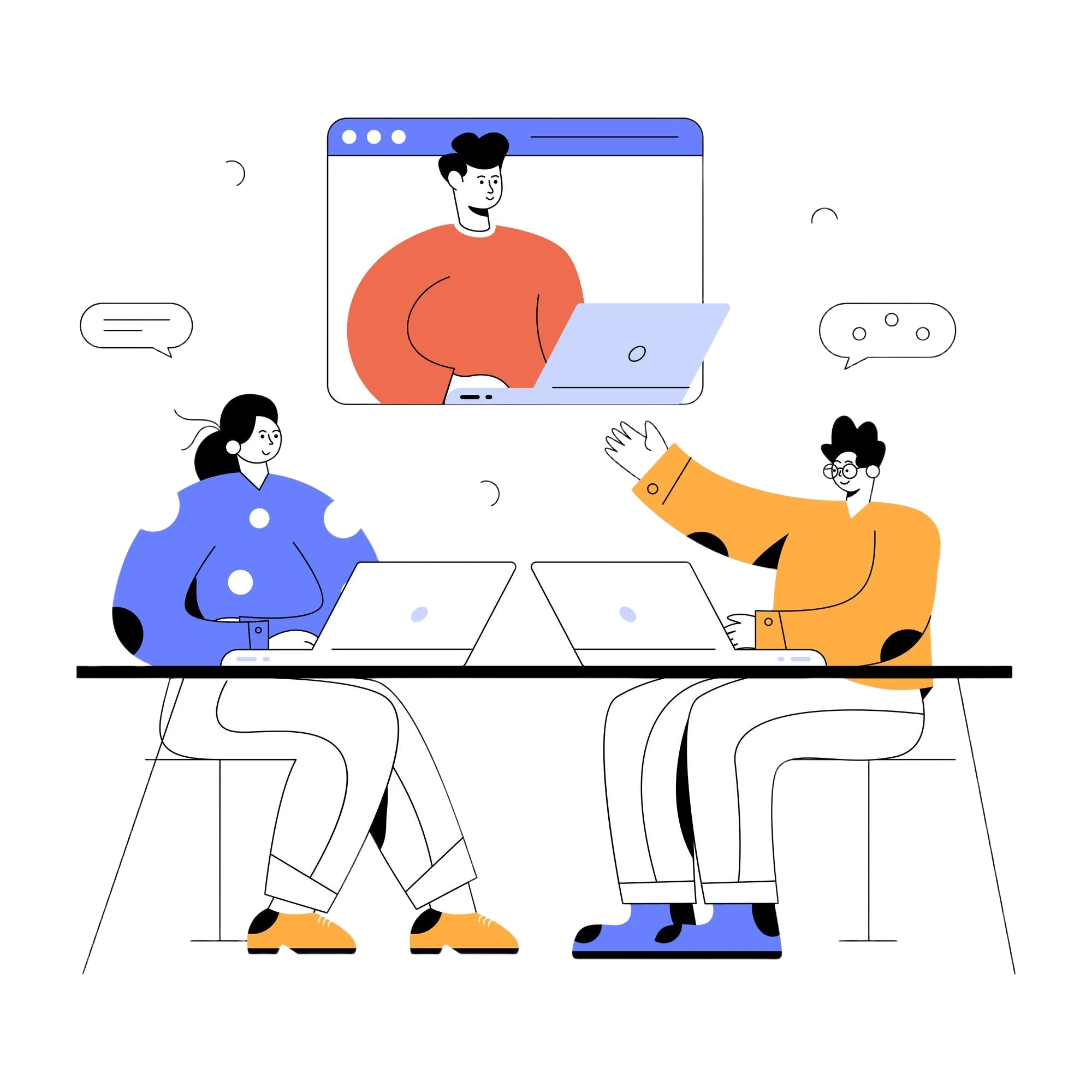
Rewards
.





CANADA
55 Village Center Place, Suite 307 Bldg 4287,
Mississauga ON L4Z 1V9, Canada
Certified Members:
.



Home » Predictive Analytics for Preventive Healthcare: Implementing a Business Intelligence Strategy

What if your doctor could tell you about a health problem before you even feel sick? That’s we called predictive analytics – using data to predict health risks early and take action to prevent them.
This tool is changing the way of healthcare’s working. Predictive analytics helps spot patterns in patient data, while Business Intelligence (BI) tools turn those insights into clear, useful plans for action. Together, they’re improving how we handle healthcare – saving lives and cutting costs along the way.
In this blog, we’ll break down what predictive analytics in healthcare is, how BI tools fit into the picture, and why they’re essential for better preventive care.
In the world of modern healthcare, data is everywhere – from patient records to lab reports and even lifestyle tracking apps. But how do healthcare providers make sense of this mountain of information to improve outcomes? That’s where Business Intelligence (BI) comes into play.
At its core, Business Intelligence in healthcare refers to using data analysis tools to turn raw healthcare data into actionable insights. BI tools collect, analyze, and visualize data in real-time, allowing hospitals, clinics, and even insurance providers to make smarter, faster decisions.
With the help of healthcare business intelligence solutions, medical institutions can track patient trends, improve operational efficiency, and make decisions that align with their goals. As more healthcare organizations adopt business intelligence healthcare solutions, the industry is evolving toward more precise and personalized care.
Predictive analytics in healthcare becomes even more powerful when incorporated with BI tools like Power BI. These platforms go beyond basic reporting – they enable healthcare teams to visualize predictive models, analyze trends, and take immediate action based on real-time data.
BI platforms bring data collectively from various sources such as from EHRs, lab results, and even wearable devices that is significant for creating to the point predictive models.
With BI tools like Power BI, healthcare providers can view predictive analytics through easy-to-understand dashboards. These dashboards make it simple to track patient trends, detect anomalies, and monitor risk factors in real time.
Business Intelligence software in healthcare doesn’t just show trends; it helps healthcare teams act on them. For example, a BI dashboard can highlight patients at high risk for diabetes that enable doctors to take major preventive steps like dietary changes or additional screenings.
Business Intelligence tools make it easy for teams to share insights and work together. Whether it’s between doctors, nurses, or administrators, having access to clear data fosters better communication and decision-making.
Want to make healthcare smarter and more proactive? A well-thought-out business intelligence strategy can do just that by leveraging predictive health analytics. Here’s a simple guide to help you take the first steps toward better patient outcomes.
Start by figuring out the types of information your system requires to make better decisions with business intelligence in healthcare industry.
Patient Records: Collect details like health reports, doctor visits, and treatments.
Medical History: Include past conditions or recurring health issues to identify patterns.
External Factors: Bring in data like air quality, living conditions, or income levels to get a complete picture of what affects patient health.
Knowing the right data to use will strengthen your healthcare analytics and business intelligence foundation.
Choosing the right tool to implement business intelligence for healthcare industry is key. Tools like Power BI and Tableau are perfect for turning complicated data into easy-to-understand insights.
Here’s how these tools help with predictive health analytics:
Easy to Scale: They work well for both small clinics and large hospital networks.
Powerful Analytics: These platforms offer built-in tools to predict outcomes and analyze performance.
Customizable Dashboards: You can set up dashboards to monitor important metrics like patient care quality or hospital costs.
By selecting the right tool, you make healthcare analytics and business intelligence simple and accessible for your team.
A tool is only useful if your team knows how to use it. Training healthcare workers to use business intelligence tools to ensure they can make the most of it.
Here’s how you can help your team:
Hands-On Learning: Organize sessions where staff can practice using BI tools.
Real-Life Examples: Show them how to use the tools to find high-risk patients or improve care processes.
Team Collaboration: Encourage different departments like doctors, nurses, and administrators to share insights and work together using the tools.
Training helps everyone understand how business intelligence in healthcare industry can make their work easier and more effective.
The true value of predictive health analytics comes when you connect it with BI tools. This connection lets you see insights in real time and take quicker actions.
How to Do It:
Use past data to build predictive models that can identify trends like the risk of a certain illness.
Add these models to BI dashboards so healthcare teams can easily access predictions.
Integrate live updates from health systems or wearable devices to keep information current.
This combination of healthcare analytics and business intelligence gives you the ability to take proactive steps
Once your system is running, it’s important to keep improving it. Regular updates and checks will make sure your business intelligence for healthcare industry strategy stays effective.
How to Improve:
Track Performance: Measure how BI tools are helping with patient care and cutting costs.
Listen to Feedback: Get input from your team to find ways to make the system even better.
Update Models: Refresh your predictive models regularly with new data for better accuracy.
By reviewing and improving your approach, your predictive health analytics system will stay relevant and impactful.
By following these steps, healthcare providers can make use of business intelligence in the healthcare industry to make better decisions. Alongside predictive health analytics, these tools transform care quality and optimize resources considering future demands.
Start building your healthcare analytics and business intelligence strategy today and see how data can transform your healthcare system!
Get free Consultation and let us know your project idea to turn into an amazing digital product.

Predictive analytics is changing healthcare by making it easier to catch health problems early and prevent them. With tools like AI predictive analytics in healthcare, doctors and hospitals can provide better care while saving money. Let’s break this down in a simple way.
One of the most important ways predictive healthcare analytics helps is by improving patient health outcomes.
Predictive tools can look at a patient’s medical history and habits to find warning signs of health problems. This means doctors can take action before things get worse.
For instance, hospital predictive analytics can alert doctors about patients who might develop heart disease or diabetes, giving them time to step in and help.
With healthcare predictive analytics, hospitals can create custom care plans for patients. Instead of giving the same advice to everyone, doctors can focus on what each person needs based on their risks.
AI predictive analytics in healthcare makes predictions faster and more accurate. For example, AI tools can help doctors see which patients might need emergency care soon, so they can be ready to act.
Using predictive analytics for early disease detection and prevention improves patient care, reduces serious health problems, and ensures treatment is more effective.
Predictive analytics doesn’t just improve health—it also helps hospitals and patients save money. With predictive analytics healthcare tools, hospitals can avoid waste and use resources more efficiently.
Catching illnesses early often means treatment is simpler and less expensive. For instance, finding cancer early with predictive healthcare analytics can help patients avoid high-cost treatments for advanced stages.
Predictive tools help hospitals plan their resources more effectively. Hospital predictive analytics can predict how many patients might need care next week, so hospitals can be prepared.
With healthcare predictive analytics, hospitals can predict which patients are more likely to face complications that allows them to take steps early and prevent costly emergency room visits.
Tools like Power BI make managing costs even easier. Power BI takes all the data from predictive models and shows it in clear charts or reports, helping hospitals see where money is being wasted.
Power BI gives hospitals better insights into trends and spending, helping them make smarter decisions that save money and improve care.
Predictive healthcare analytics offers benefits like, it helps patients stay healthier and reduces the overall cost of healthcare by using tools like AI predictive analytics in healthcare and platforms like Power BI, hospitals can plan better, save money, and give patients the care they need sooner.
Hospitals using predictive analytics healthcare today are paving the way for smarter, more efficient healthcare systems tomorrow.
Predictive analytics lets healthcare teams find potential health issues early, so they can act quickly and improve patient care. Let’s see how it’s changing the game in preventive healthcare and helping healthcare providers make better calls.
In the past, healthcare mostly focused on treating illnesses after they occurred. But now, with predictive healthcare analytics, the focus is shifting toward preventing health problems before they start. By analyzing patient data, including medical history, lifestyle, and even genetic information, health business intelligence tools can help to identify patients who might be at risk of diseases long before symptoms appear.
For example, using hospital predictive analytics, doctors and hospitals can spot patterns in a patient’s health records that could indicate early signs of chronic conditions like diabetes, heart disease, or cancer. By identifying these risks early, healthcare teams can take preventive actions like recommending lifestyle changes, early screenings, or starting treatment sooner, which can help avoid serious health issues later on.
Medical business intelligence tools work hand in hand with predictive analytics to bring these insights to life. With business intelligence in healthcare, hospitals can organize and analyze all of the data they collect, making it easier for healthcare teams to create personalized care plans for patients. These tools help doctors, nurses, and staff make smarter decisions by turning complex data into simple, easy-to-understand information.
One of the biggest benefits of business intelligence and analytics for healthcare organizations is how it helps healthcare providers make smarter, more informed decisions. Imagine a hospital that can predict which patients need more attention based on their medical history and real-time health data. With the help of BI healthcare tools like Power BI, healthcare professionals can get a clear picture of patient trends, health risks, and hospital performance—all in one place.
Spot High-Risk Patients: By analyzing patient health data, predictive healthcare analytics can flag the patient who have at high risk for certain diseases, ensuring doctors to take actions before the condition become adverse.
Better Use of Resources: Hospitals can predict what patients will need and make sure they have enough staff, supplies, and meds on hand, so patients get the care they need at the right time.
Improved Operations: With BI tools, hospitals can streamline their processes, cut down on wait times, and boost efficiency, making sure they can care for more patients faster.
Health business intelligence allows hospitals and healthcare providers the tools to make decisions based on real data. It also helps them to anticipate what’s coming, plan ahead, and adjust strategies as needed to provide better care for their patients.
With the evolution of healthcare, one of the most seen changes is the use of Artificial Intelligence with predictive analytics. This amalgamation will change the way of healthcare providers to manage their operations. In this section, we’ll look at the future of AI in healthcare and how business intelligence in healthcare will play a key role moving forward.
The blend of AI and predictive analytics for healthcare is already starting to change the way healthcare works. AI predictive analytics in healthcare can handle large amounts of data from different sources like patient records, wearables, and even lifestyle information. It can then predict health risks and outcomes more accurately and quickly than traditional methods.
Here’s how this combination is making a big difference in healthcare:
AI can easily analyze a patient’s medical history, lifestyle, and genetic information which help it to create a treatment plan that works best for them. Predictive healthcare analytics can even predict how certain treatments will work, allowing doctors to pick the most effective options for each patient.
AI tools can look at medical images like X-rays and MRIs and spot early signs of chronic illnesses such as cancer or some heart related disease that might be missed by the human eye. This means doctors can diagnose diseases earlier, leading to better treatment outcomes.
AI can track patients in real-time using wearable devices that monitor things like heart rate, sleep patterns, and physical activity. Healthcare BI (business intelligence) tools can gather all this data and point out any health concerns, allowing healthcare providers to take action quickly.
This is just the beginning. As AI continues to improve, the healthcare industry will see even greater benefits in terms of both clinical care and efficiency.
Although AI and predictive analytics for healthcare offer huge potential, there are challenges in making these technologies a regular part of healthcare. The healthcare industry is very regulated, and privacy concerns around patient data are always a priority. The future of business intelligence for healthcare depends on how these concerns are addressed.
One of the concerning challenges to adopting AI and predictive analytics in healthcare is protecting patient data. AI systems require access to personal information like medical records and even genetic data. Keeping this data safe is essential, but it’s a challenge.
The best way to solve this issue is by implementing strong security practices and following the rules set by regulations like HIPAA (Health Insurance Portability and Accountability Act). Healthcare organizations must invest in encryption, strict access controls, and other security measures to keep patient data safe while still allowing AI and predictive analytics for healthcare systems to use it.
Despite these challenges, there are many opportunities for business intelligence healthcare tools to make a real difference. When healthcare organizations use the right strategies and tools, they can get the most out of healthcare BI. Here’s how:
By integrating business intelligence for healthcare with AI, healthcare providers can make better decisions based on data. BI tools give healthcare teams a complete picture of a patient’s health, which helps them choose the best course of action.
AI can make efficient administrative tasks like scheduling, billing, and resource management. With the help of predictive analytics for healthcare, hospitals can better predict patient needs and manage staff more effectively, which reduces costs and improves patient care.
As more healthcare providers start using business intelligence in healthcare, we’ll likely see more collaboration across various industries, including partnerships with several tech companies, insurance providers, and pharmaceutical companies, leading to better-connected systems that share data to benefit patients.
Looking ahead, AI and predictive analytics in healthcare will only continue to grow in importance. With the right tools, training, and security practices, healthcare providers will be able to use business intelligence for healthcare to improve patient care, reduce costs, and streamline operations.
The future of healthcare will be shaped by smarter decision-making, with AI and healthcare BI playing a critical role. As predictive analytics for healthcare continues to develop, we’ll see more exciting possibilities in the healthcare industry.
In this section, we’ve covered how AI predictive analytics in healthcare is changing the way healthcare is delivered, along with both the challenges and opportunities involved. Business intelligence in healthcare is key to overcoming these challenges, and it will help create a more efficient and patient-focused healthcare system.
Share your project idea with us. Together, we’ll transform your vision into an exceptional digital product!

In the end, using business intelligence (BI) in healthcare helps make preventive care much more effective. With tools like Power BI, healthcare providers can spot potential health risks early, leading to better patient care and lower overall costs. A strong business intelligence strategy makes it easier to make better decisions and improve the healthcare system.
They can overcome these challenges by using advanced tools for data integration, setting clear data governance policies, and ensuring that data systems are compatible with one another.
CFOs and CIOs are responsible for securing funding, ensuring data security, managing changes, and aligning predictive analytics projects with the organization’s goals.
Data types include electronic health records (EHRs), patient demographics, genetic information, wearable device data, and social factors affecting health.
Data quality is ensured by following data governance guidelines, regularly auditing data, and using data cleaning tools to remove errors or inconsistencies.
They can measure ROI by tracking performance indicators like fewer hospital readmissions, improved patient satisfaction, and cost savings from preventive actions.
Examples include fewer emergency room visits, shorter hospital stays, and fewer unnecessary tests or procedures.
Ethical considerations include ensuring patient privacy, avoiding biased algorithms, and obtaining informed consent from patients.
They can implement strong data security measures, comply with privacy laws like HIPAA, and be transparent about how patient data is used.
Algorithmic bias occurs when predictive models are influenced by biased data. This can be reduced by using diverse datasets, auditing algorithms regularly, and involving diverse teams in model development.
Future trends include more use of AI and machine learning, the integration of genomics data, and the adoption of real-time analytics.

In the healthcare industry, managing and securing sensitive patient data is paramount. With the increasing adoption of cloud technologies, healthcare organizations are leveraging platforms like Microsoft Azure to store, process, and analyse healthcare data. However, with this shift comes the responsibility

The combination of Microsoft AI, Azure Health Insights, and Azure Cognitive Services is transforming healthcare by allowing smarter and efficient decision-making based on data. These technologies can fundamentally change the conventional practices of healthcare by taking new approaches to enhance

Healthcare is undergoing a massive shift thanks to new technologies. Think cloud computing, artificial intelligence (AI), and the tools developers use to build websites and apps. Hospitals and doctors’ offices are all trying to get better at caring for patients, running more smoothly, and keeping data safe. That’s why using Microsoft tech and Angular together has become a popular way to build modern, easy-to-use digital healthcare solutions.
Schedule a Customized Consultation. Shape Your Azure Roadmap with Expert Guidance and Strategies Tailored to Your Business Needs.
.





55 Village Center Place, Suite 307 Bldg 4287,
Mississauga ON L4Z 1V9, Canada
.




Founder and CEO

Chief Sales Officer

🎉 Thank you for your feedback! We appreciate it. 🙌